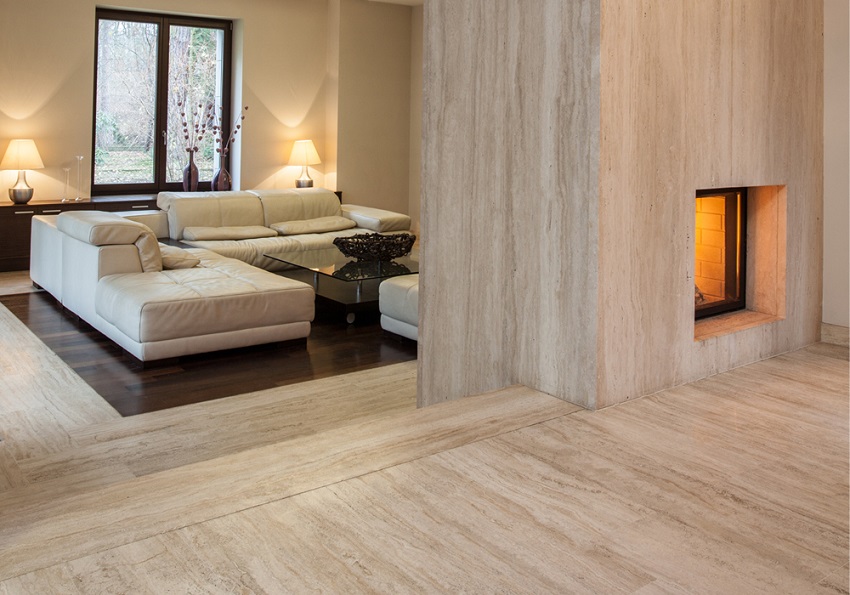If you’re considering renovating your home or office and exploring different options for countertops, flooring, or other surfaces, you might have come across the terms “travertine” and “marble.” While both materials are popular choices for adding elegance and sophistication to interior spaces, they are not the same. In this article, we’ll dive into the world of natural stones to understand what sets travertine and marble apart. The content is brought to you by Decoracaos.com.
Understanding Natural Stones
Before we delve into the differences between travertine and marble, let’s first gain a better understanding of natural stones. Natural stones are formed over millions of years through geological processes that involve heat, pressure, and mineral deposits. They are quarried from the earth’s crust and have been used in construction and decor for centuries due to their unique beauty and durability.
What is Travertine?
Travertine is a sedimentary rock that forms in mineral springs, particularly hot springs and limestone caves. It is composed mainly of calcite, the same mineral found in limestone and marble. The characteristic appearance of travertine is due to the presence of natural pits and voids that are filled during processing, giving it a distinct rustic look.
What is Marble?
Marble, on the other hand, is a metamorphic rock that originates from limestone. The transformation occurs due to intense heat and pressure, causing the calcite crystals to recrystallize and create the stunning patterns and veining that travertine marble is famous for. Travertine marble has been prized for its beauty since ancient times and has been used in countless architectural masterpieces that showcase its unique characteristics.
The Key Differences
While travertine and marble share some similarities, they have distinct characteristics that set them apart. Let’s explore the key differences between these two natural stones:
Formation Process
As mentioned earlier, travertine is a sedimentary rock, while marble is a metamorphic rock. Travertine forms in mineral springs, where calcium carbonate is deposited and gradually builds up over time. Marble, on the other hand, forms deep within the earth’s crust, where intense pressure and heat cause limestone to recrystallize into marble.
Appearance
Travertine is known for its natural pits and voids, which are filled during processing. These voids can be quite pronounced, adding to its unique charm. On the other hand, marble’s defining feature is its veining, which comes in various patterns and colors. The veining in marble is more regular and dramatic than the natural pits in travertine.
Durability
Both travertine and marble are durable materials, but marble is slightly harder and denser, making it more resistant to scratches and damage. Travertine, while still robust, is more porous than marble, which means it may require sealing to prevent staining.
Use Cases
Travertine is commonly used for indoor and outdoor flooring, wall cladding, and countertops. Its earthy tones and rustic appearance make it a popular choice for Mediterranean and Tuscan-style designs. On the other hand, marble is often used in luxurious interiors for flooring, countertops, and sculptures. Its elegance and timeless beauty make it a favorite in classical and contemporary designs.
Cost
In general, travertine is more affordable than marble. The availability of travertine in large quantities and its easier extraction process contribute to its lower cost compared to the more labor-intensive mining of marble.
Conclusion
While travertine and marble share some similarities, they are distinct natural stones with unique characteristics. Travertine’s rustic charm and affordability make it a popular choice for a wide range of projects, while marble’s elegance and timeless beauty elevate the look and feel of any space. Before making a decision, consider your design preferences, budget, and the specific requirements of your project.
FAQs
Is travertine a type of marble?
No, travertine is not a type of marble. While both are natural stones and contain calcite, they form through different geological processes, resulting in distinct appearances and characteristics.
Can travertine be used outdoors?
Yes, travertine is suitable for outdoor applications such as patio flooring and pool surrounds. Its natural resistance to extreme temperatures makes it a popular choice for outdoor spaces.
Does marble require more maintenance than travertine?
Both marble and travertine require regular maintenance, including sealing to prevent staining and proper cleaning. However, marble’s denser structure makes it slightly more resistant to wear and tear.
Can travertine be used in wet areas like bathrooms?
Yes, travertine can be used in wet areas like bathrooms, but it should be properly sealed to prevent water penetration and staining.
Which stone is more suitable for a modern interior design?
Marble is often favored in modern interior designs due to its elegant veining and luxurious appearance. However, travertine can also complement certain modern designs with its unique texture and warm tones.


